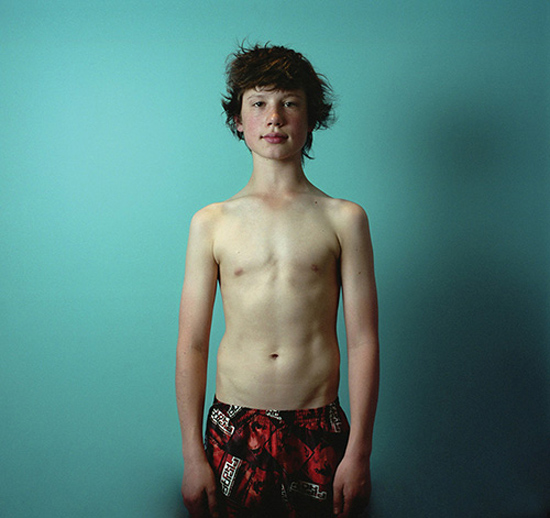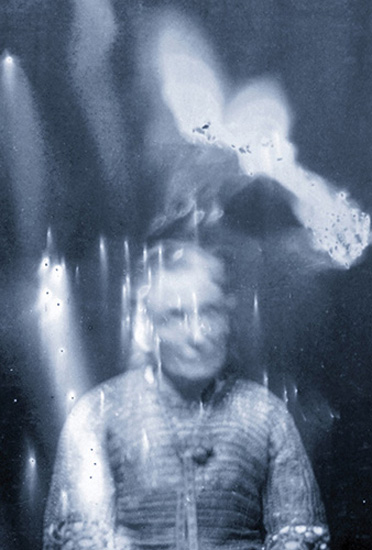On a visit to Canberra, Isobel Philip discovers things aren’t so simple…
While each of the six photographers featured in the Canberra Museum and Gallery’s current exhibition Lens Love possess dramatically different aesthetic temperaments and thematic preoccupations, they share more than just geography. The connective tissue that binds this cluster of artists is not the simple fact that they all work within the Canberra region; it’s more complicated.
The catalogue essay written by Shane Breynard, the exhibition’s curator and Director of the Canberra Museum and Gallery, addresses these six photographers as unified allies working against the ubiquity of the casual snapshot and the deluge of empty signifiers that flood our visual environment. Producing considered and calculated images, Breynard maintains, these photographers contravene the impulsive gesture of the snapshot and invite the viewer to linger a little longer with an image.
Marzena Wasikowska, from the series Kai at …, 2004-2013, C-type prints and inkjet prints, 40.5 x 40.5cm. Image courtesy of the artist and Canberra Museum and Gallery.
It is possible to explicate this observation through an analysis of the modulated temporal registers at play in many of the works exhibited. Marzena Wasikowska’s series Kai at… is a photographic study of episodic time. The photographs in this series were taken between the years 2004 and 2013 at intervals of six to twelve months. Each image is a portrait of the artist’s son staring fixedly into the camera. Across the sequence of chronologically arranged photographs, we witness his transformation from boy to man. Here, the photographic ‘instant’ gives way to the photographic ‘increment’ and the camera does more than simply record; it archives.
In its own way, Martyn Jolly’s series Faces of the living dead also examines the temporal framework of the photographic archive. Scanning, cropping and re-presenting a collection of spirit photographs from the Cambridge University Library collection, Jolly uses the photographic archive as his primary source material and thematic directive. He hasn’t taken these photographs; he has collected and assembled them. These manipulated images, once believed to be evidence of clairvoyant veracity, depict ghost-like figures or the face of a deceased person superimposed on portraits of their mourning relatives. Yet, Jolly’s interest in the structural principles of the archive is not limited to its potential as a fruitful cache for photographic content. Each image that has been selected and cropped by Jolly complicates the authority of chronological time. Portraits of the deceased are stitched into portraits of the living. There is no single ‘instant’ here, only the collaged composite of competing temporal markers.
Martyn Jolly, from the series Faces of the living dead, 2001, C-type print,19 x 13 cm. Image courtesy of the artist and Canberra Museum and Gallery.
The same collaged temporality, in which one moment is haunted by another, appears in Cathy Laudenbach’s series The familiars. Focusing her camera on rooms that are said to be plagued by ghosts and other supernatural phenomena, Laudenbach flirts with forgotten narratives and spectral apparitions. These rooms are empty but the residual trace of their departed occupants remains.
While Laudenbach and Jolly dredge up the remnants of past time, John Reid constructs a divergent stream of mythological time. His body of work devoted to the discovery and documentation of a fictional creature, the ‘fishman’, oscillates between the (supposedly) discordant objectives of the photographic record and the mythological narrative. The blurred ephemeral figure that inhabits these photographs (the artist himself disguised as a natural history specimen) collapses the distinction between photographic reality and folklore. These photographs give shape to a parallel world in which the fictional and the factual — the fishman and the artist — can coexist.
Against these attempts to formulate aberrant and alternative temporal rhythms, Lee Grant and Denise Ferris exhibit work that appears to stand outside the passage of time. In her series The Colour of Snow, Ferris photographs winter landscapes populated by figures enveloped in blizzards and blankets of snow. The figures are absorbed into the landscape and on the verge of disappearing into the abyss of total whiteout. In a landscape where visibility begins to disintegrate, there is little to orient the viewer. Metric time loses its footing.
In The Korea Project, Belco Pride and Oriental Dinner, Grant investigates the formulation and fabrication of cultural identity. Examining the way cultural signposts are mediated and translated — the homogenized interiors of suburban Asian restaurants in Oriental Dinner and portraits of Koreans living in Australia in The Korea Project — or the way a domestic environment betrays the personality of its inhabitants in Belco Pride, Grant presents images that operate as self-enclosed statements (as studies). Narrative is relinquished in favour of anthropological inquiry.
While these six artists remain committed to their own thematic agendas, their work quietly coalesces. This is an exhibition motivated by more than the convenience of context. These photographers offer alternative views to that of the casual snapshot, sure, but they also do something else. They unsettle the hegemony of the photographic instant and introduce aberrant temporal schemes while attempting to photograph the unphotographable; ghosts, mythological creatures, the collapse of visibility in a blizzard. They summon the unobserved and articulate a different pace.


